In 1906 the Pittsburgh, Harmony, Butler, and New Castle Railway (PHB&NC), a short-gauge trolley that would become known popularly as the Harmony Line, was founded in Pittsburgh, Pennsylvania. The laying of track and building of infrastructure commenced immediately and the line opened for business in July 1908. It ran from Pittsburgh up to Evans City where it split into two sections. One line ran off to the northeast towards Butler, while the other section ran west to Ellwood City and on to New Castle on roughly what is today Route 65/Butler Road.
In October 1913 the Harmony Line was awarded the lucrative right to build an extension of its line through Ellwood City, which would continue across the Beaver River and onto distant Beaver Falls. The Harmony beat out several other groups, including one led by Ellwood City’s founder Henry W. Hartman. The most difficult part of the 6.3-mile route was building a bridge across the Beaver River near Koppel. The bridge would also have to cross the tracks of the Pennsylvania Railroad (PRR) on the east side and the Pittsburgh and Lake Erie (P&LE) mainline on the west side of the river.
The Harmony company entertained ideas of purchasing the old P&LE railroad bridge, which was soon to be replaced with a newer span that was opened in early 1915, or the abandoned bridge piers of the Hartman group, which had previously started preliminary work on a bridge on their own. Converting the old P&LE bridge was ruled out and the Hartman piers were considered of substandard quality. It was decided to construct a completely new span about 500 feet south of the old P&LE railroad bridge and just north of the abandoned Hartman piers.
Construction commenced in late 1913 on the first piers on the Koppel side of river, but the work was briefly halted in January 1914 as quicksand was encountered. The work soon continued and the 1,200-foot-long deck truss span was completed and opened to public traffic on Sunday, November 1, 1914. A toll was soon instituted to cross the bridge with different rates for automobiles, horse-drawn wagons, and pedestrians.
The streetcars began running across the bridge in early January 1915, but where not fully in service until the following month due to a legal issue regarding the running of overhead power lines. The Harmony trolleys made stops on this extension at Park Gate, Hoytdale, Koppel, Homewood, and ended at the Harmony stop in the Morado section of northern Beaver Falls.
The demise of the Harmony Line began with the widespread use of the automobile beginning in the 1920’s. As early as 1923 the company began supplementing the Ellwood City-Beaver Falls and Ellwood City-New Castle routes with more economical bus service. By 1930, as the Great Depression began its stranglehold on the nation, the Harmony Line was nearing its end. On June 31, 1931, the Ellwood City-Beaver Falls route was shut down to trolley traffic and completed replaced with bus service. Before too long the entire Harmony Line closed down and ceased all trolley operations on August 15, 1931. The Harmony Short Line Bus Company continued operations for the next three decades until a decline in bus ridership throughout the 1950’s saw it cease operations by April 1, 1961.
In 1933 the state legislature authorized the purchase of several private toll bridges throughout the state, including the Koppel Bridge, but no immediate action was anticipated. In November 1937 local government authorities from Ellwood and Koppel began lobbying the state to purchase and take over control of the Koppel Bridge from its owners, the Ellwood & Koppel Bridge Company (a Harmony-associated corporation). In late 1937 state inspectors began examining the aging bridge and ordered it closed in February 1938 pending significant repairs. The deck was replaced and other upgrades were made before the bridge was reopened in late July 1938.
In June 1943 state highway officials finally began active negotiations for purchasing the bridge. The negotiations, hampering by haggling over the price, dragged on into 1944 and the state eventually bought the Koppel Bridge from the Harmony officials for $354,000. It was among ten toll bridges purchased throughout Pennsylvania. In April 1955 the state announced that the toll would be lifted sometime in the spring of 1957 – a few years ahead of schedule. On Wednesday, May 15, 1957, the last toll was collected on the Koppel Bridge at 9:30am. A short ceremony attended by a host of local and state officials, entertained by music from the Lincoln High School Band from Ellwood City, marked the occasion.
On Tuesday, April 1, 1958, the bridge was closed for major repairs as the old wooden and asphalt deck was slated to be replaced. The new steel grid and concrete deck, with a narrow sidewalk on the south side, was made three feet wider and the steel superstructure was also reinforced. During the work, performed by the Ferguson-Edmundson Construction Company of Pittsburgh at a cost of $387,000, local motorists had to detour to use bridges at Beaver Falls or Wampum. The repairs were finished in record time and the span was reopened for traffic on Friday, October 31, 1958.
Further extensive repairs were undertaken in 1974 and 1994. In response to the August 2007 disastrous collapse of the I-35W Mississippi River Bridge in Minnesota, a similar type structure, the Koppel Bridge came under renewed scrutiny. Subsequent state inspections revealed the bridge was “structurally deficient” but still safe for travel. It was announced in 2011 that the span, which will be 100 years old in 2015, is slated for removal and replacement with a modern structure. The effort is estimated to cost $19.3 million with actual construction expected to commence in November 2017.
To read an article from October 1914 that mentions the Koppel Bridge as it – and the Harmony extension to Beaver Falls – nears completion click on: ABOUT READY TO OPEN ARTICLE. To read a short article about the actual opening of the bridge in early November 1914 click on: NEW BRIDGE IS READY ARTICLE.
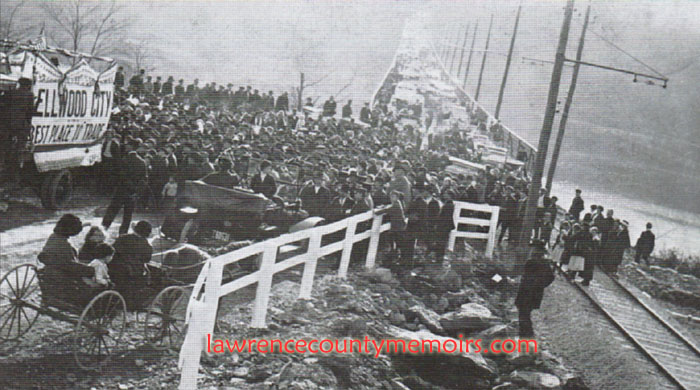 Local government officials and residents gather to celebrate the opening of the Harmony Line’s new Ellwood-Koppel Bridge on Sunday, November 1, 1914. Full Size |
 An old postcard looking east across the Koppel Bridge towards North Sewickley Township. Notice the old lattice-style railings and the abandoned piers of the proposed Hartman streetcar bridge off to the right. (c1935)Full Size |
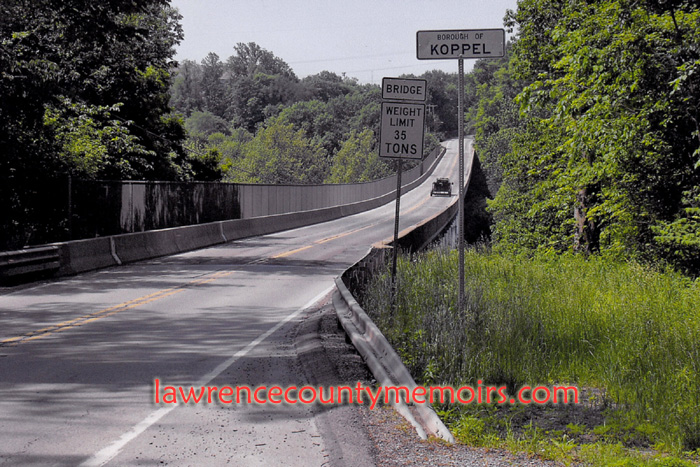 A modern-day view looking west across bridge. (May 2011) | 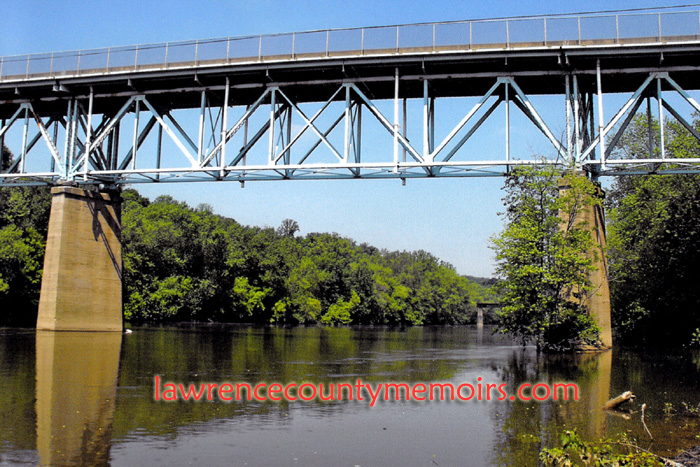 (May 2011) |
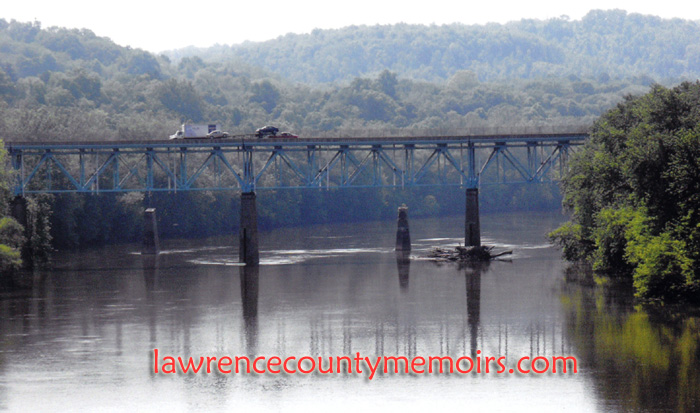 A view of the Koppel Bridge looking south along the Beaver River from the old abandoned P&LE railroad bridge. (May 2011) |
 The former PRR railroad tracks, now utilized by the trains of Norfolk Southern Railway (NS), under the east side of the bridge. (May 2011) |  (May 2011) |
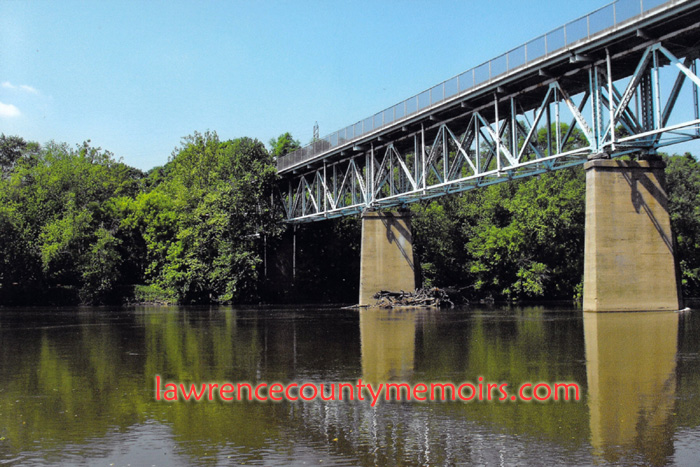 (May 2011) | 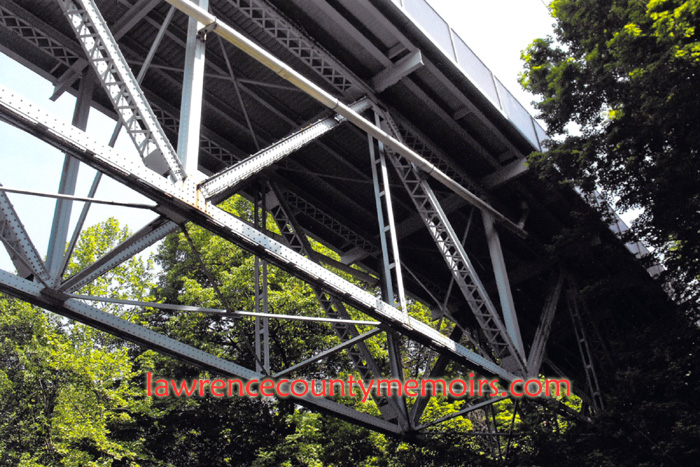 (May 2011) |
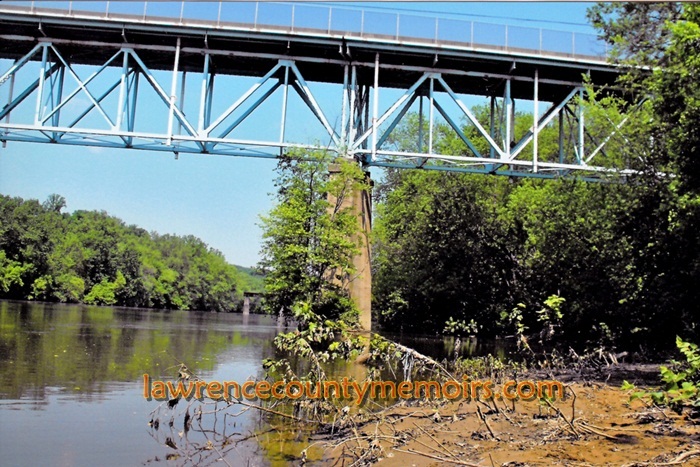 (May 2011) | 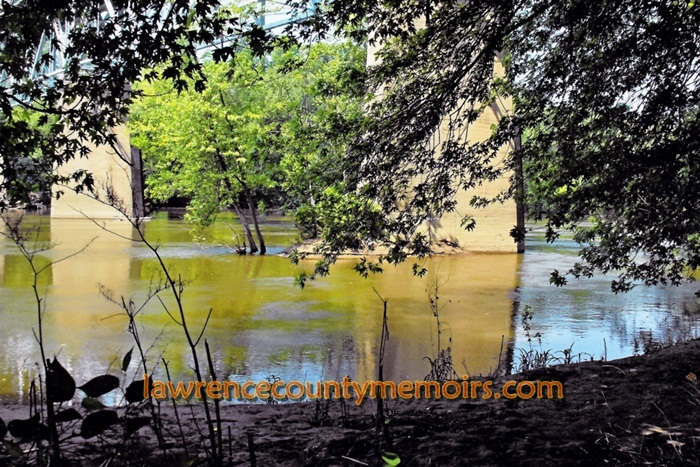 (May 2011) |
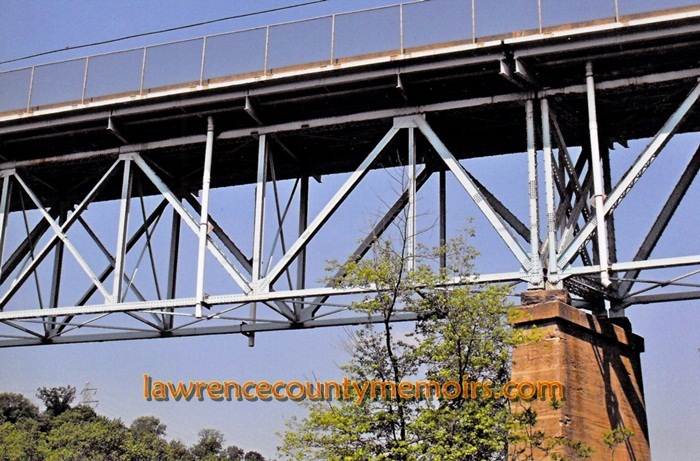 (May 2011) Full Size |
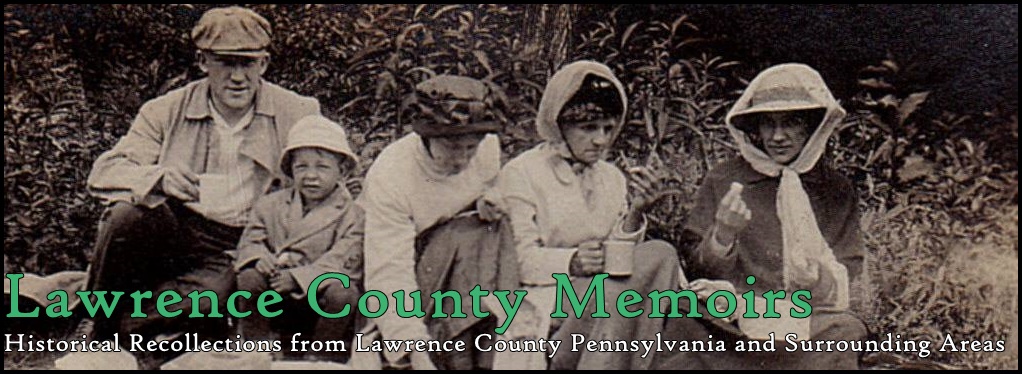



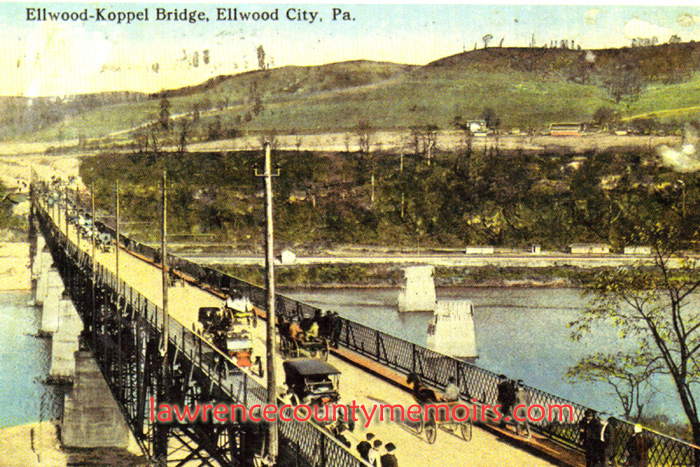
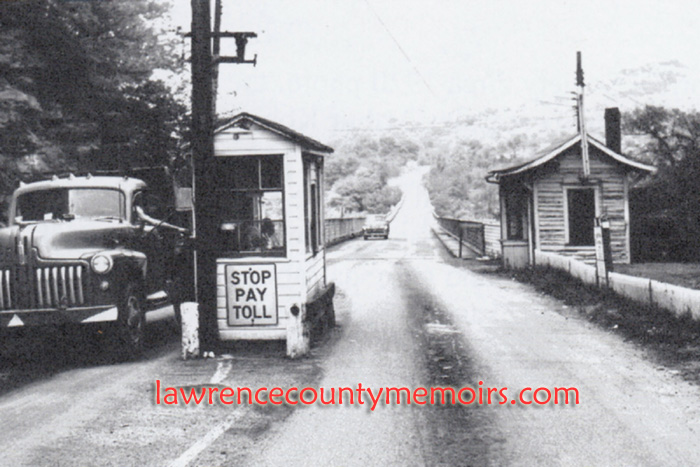
Comments
There are currently no comments on this article.
Comment